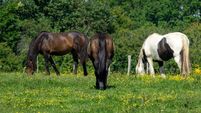Synchronisation can be useful in dairy cow management: study
Synchronisation of heifers is already commonly practised, with even the animals that have their calf early in the calving season likely to benefit and to remain in the herd longer, with a longer productive life.
The large-scale Moorepark trial on cows, the first of its type in Ireland to look at synchronisation of ovulation, included over 1,600 cows on eight farms. The work formed the basis of a PhD project carried out by Mary Herlihy, also at Teagasc Moorepark.













